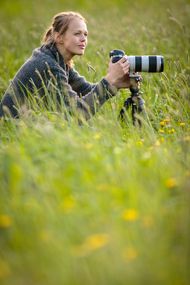
For photographers who are delighted to click a perfect shot, it’s always helpful to learn more about the fine art of taking pictures. Concepts that you may learn in photography classes can be priceless to you as you focus your DSLR or digital camera on your subjects. Two of the most important are depth of field and aperture. Learning these terms can help you achieve even better results. Here’s what you need to know.
What You Should Know About DOF & Aperture
What Is Depth of Field?
 When you aim your camera at your subject, the lens focuses on a specific point. However, this is not the only image that appears sharp when you prepare to snap the photograph. You’ll notice that the area in front of and behind that point is just as sharp. This entire zone is referred to as the depth of field. Depths of field may be shallow, which is when only a slender depth of a few inches to a few feet is sharp, or it may be deep, which is where a much greater portion of the zone looks sharp. You can control the quality of your image by controlling the depth of field on your DSLR or digital camera.
When you aim your camera at your subject, the lens focuses on a specific point. However, this is not the only image that appears sharp when you prepare to snap the photograph. You’ll notice that the area in front of and behind that point is just as sharp. This entire zone is referred to as the depth of field. Depths of field may be shallow, which is when only a slender depth of a few inches to a few feet is sharp, or it may be deep, which is where a much greater portion of the zone looks sharp. You can control the quality of your image by controlling the depth of field on your DSLR or digital camera.
What Is Aperture?
To control the depth of field, you can adjust the aperture, or the size of the hole in the DLSR or digital camera lens where light enters. The measurement used to calculate the aperture size is f/stop, which you will see on the barrel of the lens. You can use these numbers as a guide to adjust the depth of field. A low f/stop creates a larger lens opening, yielding less depth of field and a blurrier background image. But a high f/stop forces a smaller opening, which creates enhanced depth of field and a sharper background image.
How Do They Work?
You can make use of aperture to affect your depth of field by choosing your preferred range. SLR and digital cameras may begin at f/1.4 and move up to f/22. This means there are several incremental settings along the way that you can select to adjust the sharpness of your picture. If you want to create separation between your key subject and its surroundings, use a low f/stop to concentrate the depth of field specifically on the object of your choice. But for a more widespread image, like scenery, opt for a high f/stop to capture more detail.
Whether you’re in the market for a new digital camera or want to partake in some photography classes to brush up on your skills, you can trust in The Shutterbug. As the leading source for photography services, The Shutterbug locations have everything that you need to improve your technique, including high-quality brands such as Sony®, Nikon®, and Canon®, plus other brands along with other essential equipment. Visit the website to find out more about their products and classes, and call (503) 227-3456 to ask about class availability.
About the Business
Have a question? Ask the experts!
Send your question

